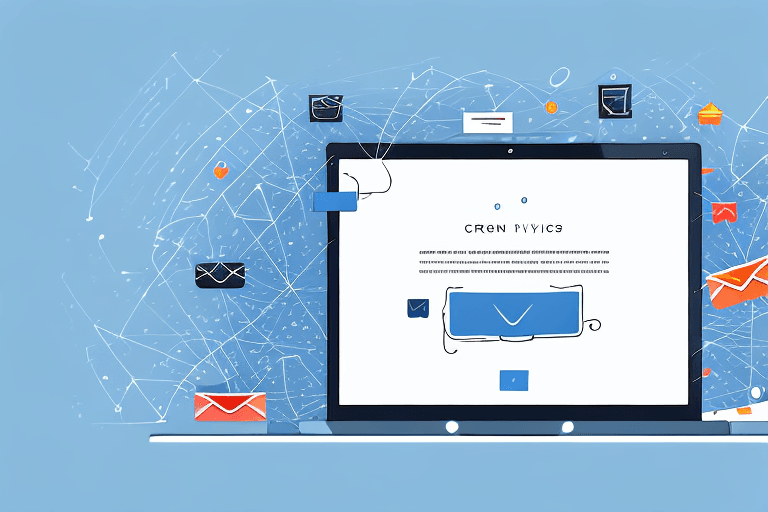If you're a business owner, you know how important it is to have a positive online reputation. One effective way to boost your reputation is to ask your customers to leave reviews of their experiences with your company. However, getting customers to leave reviews isn't always easy. In this article, we'll discuss how to craft an email template that will encourage your customers to leave reviews.
Understanding the Importance of Reviews
Before we dive into the specifics of crafting an email template, it's important to understand why reviews are so important for your business. There are a few reasons why reviews matter:
Boosting your online reputation
Positive online reviews can go a long way toward boosting your online reputation. When potential customers see that others have had positive experiences with your business, they are more likely to trust you and choose your business over your competitors.
For example, imagine you are looking for a new restaurant to try in your area. You come across two options that both serve the type of cuisine you're craving. However, one restaurant has dozens of glowing reviews, while the other has only a few mediocre reviews. Which one are you more likely to choose? Chances are, you'll go with the restaurant that has the positive reviews, because you trust that others have had a good experience there.
Improving search engine rankings
Reviews can also help improve your search engine rankings. Google and other search engines use reviews as a ranking factor, so having positive reviews can help your business show up higher in search results.
For example, if you own a coffee shop and someone searches for "best coffee shops in [your city]," your business is more likely to show up at the top of the search results if you have a high number of positive reviews. This is because Google sees your business as more trustworthy and relevant to the search query.
Increasing customer trust
Frequent, positive reviews can build trust with potential customers. Seeing that others have had positive experiences with your business can help ease any doubts or concerns they may have and make them more likely to choose your business.
Think about the last time you made a purchase online. Did you read any reviews before making your decision? If so, you're not alone. In fact, studies show that 91% of people regularly or occasionally read online reviews before making a purchase. This is because we want to make sure we're spending our money wisely and getting a good product or service.
By having positive reviews, you can reassure potential customers that they are making a good decision by choosing your business. This can lead to increased sales and customer loyalty in the long run.
Identifying Your Target Audience
Before you start crafting your email template, it's important to consider who your target audience is. Who are you asking for reviews? Are they first-time customers, or are they long-time patrons? Different audiences may respond better to different messaging, so it's important to segment your customer base and tailor your message accordingly.
Identifying your target audience is crucial to the success of your review request campaign. By understanding the characteristics of your customers, you can create a message that resonates with them and encourages them to leave a review.
Segmenting your customer base
Segmenting your customer base involves dividing your customers into groups based on similar characteristics. This can include factors such as purchase history, frequency of visits, and demographics. By segmenting your customer base, you can create targeted messages that speak directly to the needs and preferences of each group.
For example, if you have a group of customers who frequently visit your business but have never left a review, you can create a message that acknowledges their loyalty and encourages them to share their experience with others. On the other hand, if you have a group of first-time customers, you may want to provide more information about your business and the benefits of leaving a review.
Determining the right timing for review requests
The timing of your review request can also impact your response rates. Sending your request shortly after a customer has made a purchase or had a positive interaction with your business is a great way to increase the likelihood that they will be willing to leave a review.
However, it's important to be mindful of the timing of your request. If you send a review request too soon after a customer's interaction with your business, they may not have had enough time to fully evaluate their experience. On the other hand, if you wait too long, the customer may have forgotten about their experience and be less likely to leave a review.
By finding the right balance and timing for your review request, you can increase the likelihood that your customers will leave a positive review and help your business grow.
Crafting a Compelling Subject Line
The subject line is the first impression your email makes on your customers. It's the deciding factor of whether they will open your email or not. Therefore, it's crucial to make it compelling, personalized, urgent, and concise to encourage them to read on.
Personalizing the subject line
Personalization is a powerful tool to grab the reader's attention. It helps to make the email feel more relevant and personal to the customer. You can use the customer's name or reference their recent purchase to make the email more engaging. For example, "Hey, John! Check out our latest collection of running shoes."
Personalization can also be used to create a sense of exclusivity. For instance, "Exclusive offer for our loyal customers: Get 20% off on your next purchase."
Creating a sense of urgency
Urgency is another effective way to make your subject line stand out. It creates a fear of missing out (FOMO) that motivates customers to open your email. You can use phrases like "Limited time offer," "Only a few hours left," or "Act fast" to convey that there is a time-sensitive reason why they should open your email.
Another way to create urgency is to use numbers. For example, "Last chance to save $50 on your purchase" or "Only three spots left for our free webinar."
Keeping it short and sweet
While personalization and urgency are essential, it's equally important to keep your subject line short and to the point. Aim for 50 characters or less to ensure that it displays properly on all devices and doesn't get cut off.
Remember, your subject line should be a teaser, not a summary of the email. It should pique the reader's interest and encourage them to open the email to learn more.
In conclusion, crafting a compelling subject line is an art that requires a mix of personalization, urgency, and conciseness. By following these tips, you can increase the open rates of your emails and engage your customers more effectively.
Writing an Engaging Email Body
Now that you've got your customer's attention with a compelling subject line, it's time to focus on the body of the email. The email should be engaging and informative, providing clear instructions on how to leave a review.
Personalizing the message
Personalizing the message can help make the email feel more relevant to your customers and increase the likelihood that they will take action. Consider referencing their recent purchase or interaction with your business to make the email feel more personal.
For example, if you are sending the email to a customer who recently purchased a product from your online store, you could start the email by saying something like:
Hi [Customer Name],
We wanted to reach out and say thank you for choosing to shop with us! We hope you are enjoying your new [Product Name] and wanted to ask if you would be willing to leave a review to help other customers learn more about our products.
By referencing the customer's recent purchase, you are showing that you value their business and are not just sending a generic email to everyone on your mailing list.
Explaining the purpose of the review
It's important to clearly explain the purpose of the review and why it's important. Let customers know that their feedback can help improve your business and provide valuable information for other potential customers.
For example, you could say:
Your feedback is incredibly important to us. Not only does it help us improve our products and services, but it also provides valuable information for other customers who may be considering shopping with us.
By explaining why the review is important, you are giving customers a reason to take the time to leave a review.
Providing clear instructions on how to leave a review
Make it easy for customers to leave a review by providing clear instructions on how to do so. Provide a direct link to your business's review page or include step-by-step instructions for leaving a review on popular review platforms like Google or Yelp.
For example, you could say:
If you're not sure how to leave a review, don't worry! It's easy. Simply click on the link below to go to our review page, and then follow the instructions to leave a review:
[Link to Review Page]
By providing clear instructions, you are removing any potential barriers that might prevent customers from leaving a review.
Keeping the tone friendly and conversational
Finally, keep the tone of the email friendly and conversational. Avoid using overly formal language or corporate jargon, and instead aim for a tone that feels approachable and authentic. This will make customers feel more comfortable leaving a review and increase the likelihood that they will respond to your request.
For example, you could say:
We know that leaving a review can feel like a chore, but we promise it's quick and easy! Plus, it really helps us out and we appreciate it more than you know.
Thanks again for choosing to shop with us, and we hope to hear from you soon!
Best,
[Your Name]
By keeping the tone friendly and conversational, you are showing customers that you value their time and appreciate their feedback.
Conclusion
Crafting an effective email template for asking for reviews can take some time and effort, but it's well worth it in the long run. By leveraging the power of reviews, you can boost your online reputation, improve your search engine rankings, and increase customer trust. Remember to tailor your messaging to your target audience, create a compelling subject line, and keep the tone of your email friendly and conversational. With these tips, you'll be on your way to receiving more positive reviews for your business.




